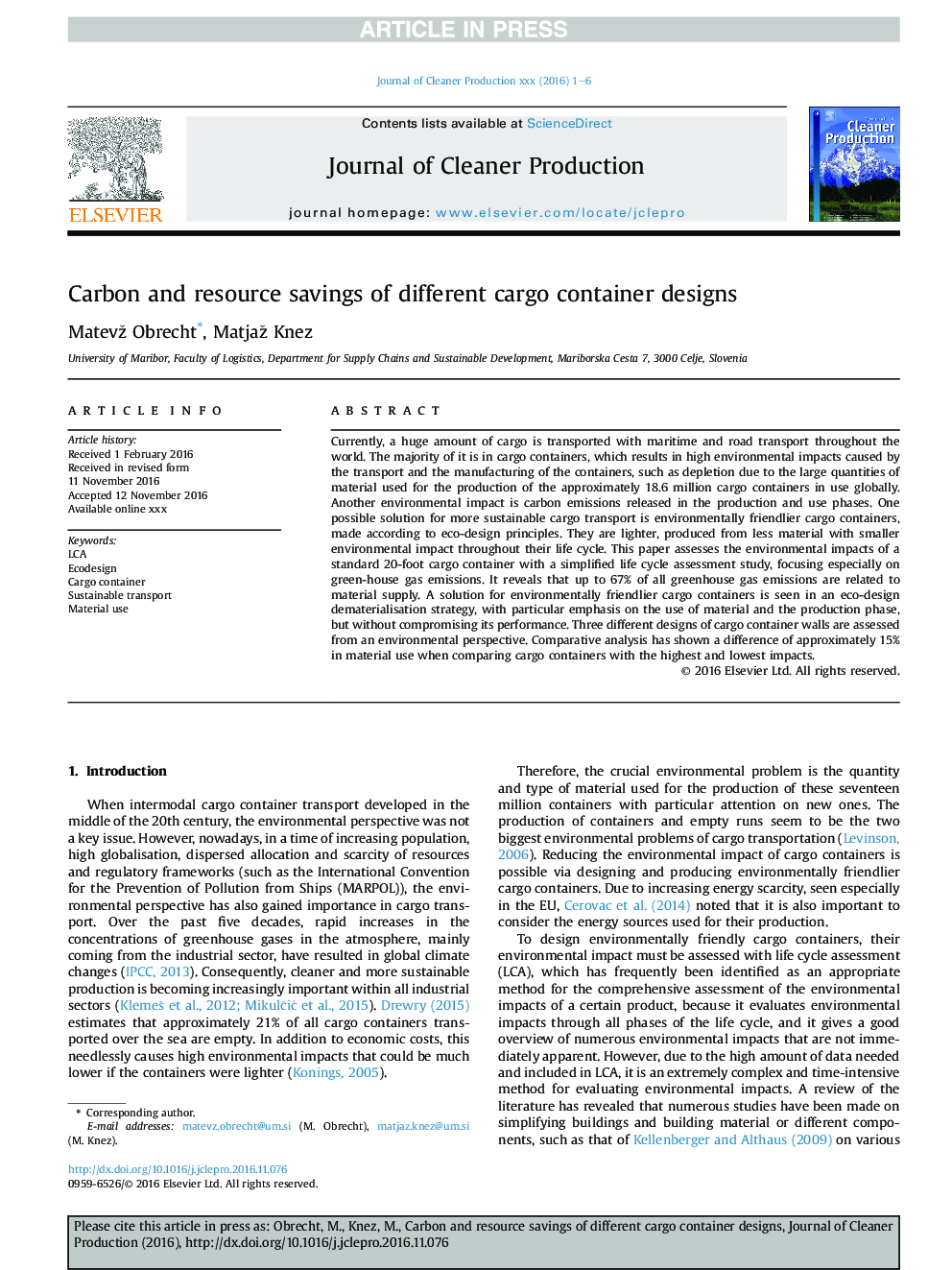| Article ID | Journal | Published Year | Pages | File Type |
|---|---|---|---|---|
| 5479700 | Journal of Cleaner Production | 2017 | 6 Pages |
Abstract
Currently, a huge amount of cargo is transported with maritime and road transport throughout the world. The majority of it is in cargo containers, which results in high environmental impacts caused by the transport and the manufacturing of the containers, such as depletion due to the large quantities of material used for the production of the approximately 18.6 million cargo containers in use globally. Another environmental impact is carbon emissions released in the production and use phases. One possible solution for more sustainable cargo transport is environmentally friendlier cargo containers, made according to eco-design principles. They are lighter, produced from less material with smaller environmental impact throughout their life cycle. This paper assesses the environmental impacts of a standard 20-foot cargo container with a simplified life cycle assessment study, focusing especially on green-house gas emissions. It reveals that up to 67% of all greenhouse gas emissions are related to material supply. A solution for environmentally friendlier cargo containers is seen in an eco-design dematerialisation strategy, with particular emphasis on the use of material and the production phase, but without compromising its performance. Three different designs of cargo container walls are assessed from an environmental perspective. Comparative analysis has shown a difference of approximately 15% in material use when comparing cargo containers with the highest and lowest impacts.
Related Topics
Physical Sciences and Engineering
Energy
Renewable Energy, Sustainability and the Environment
Authors
Matevž Obrecht, Matjaž Knez,
